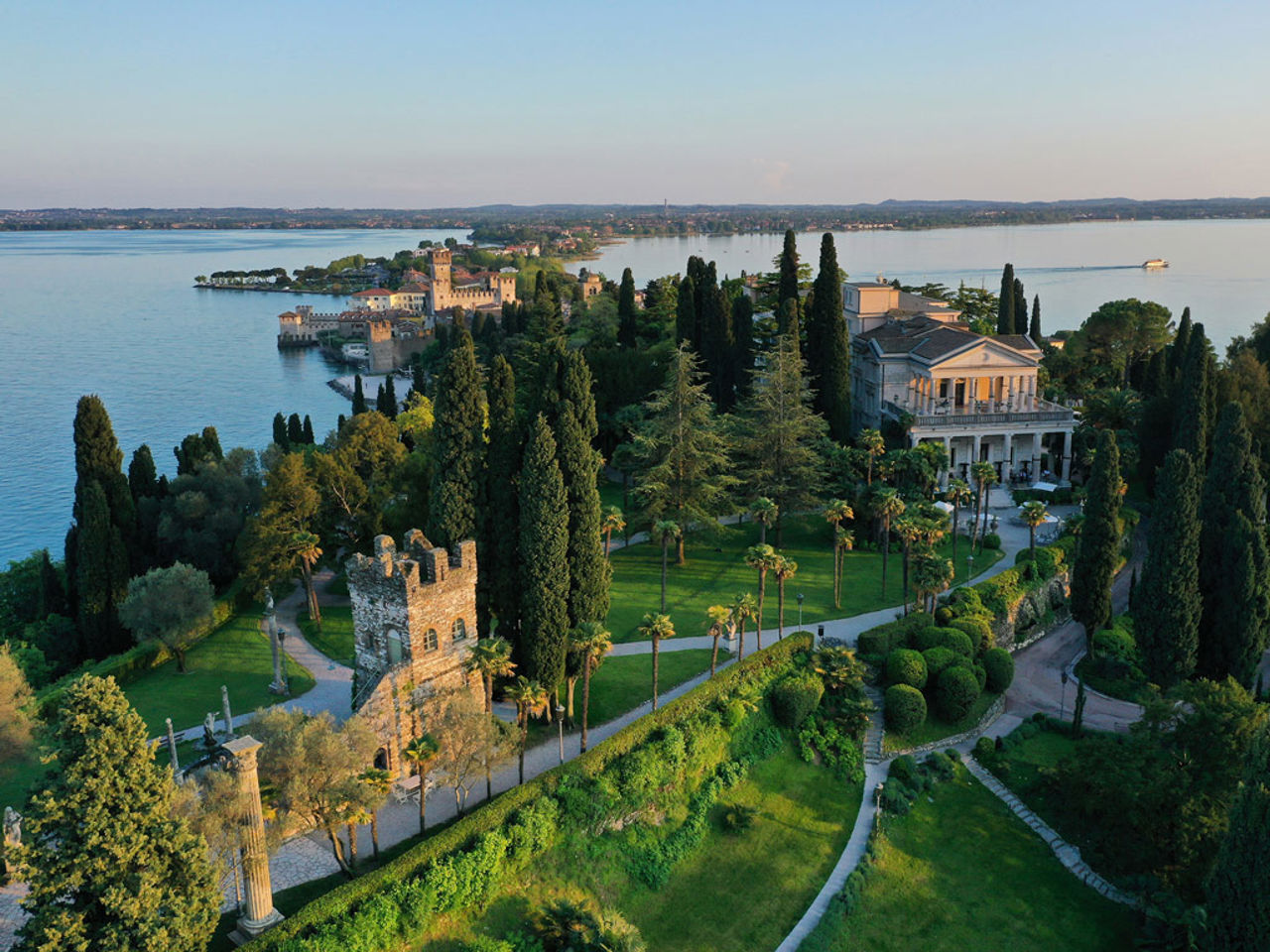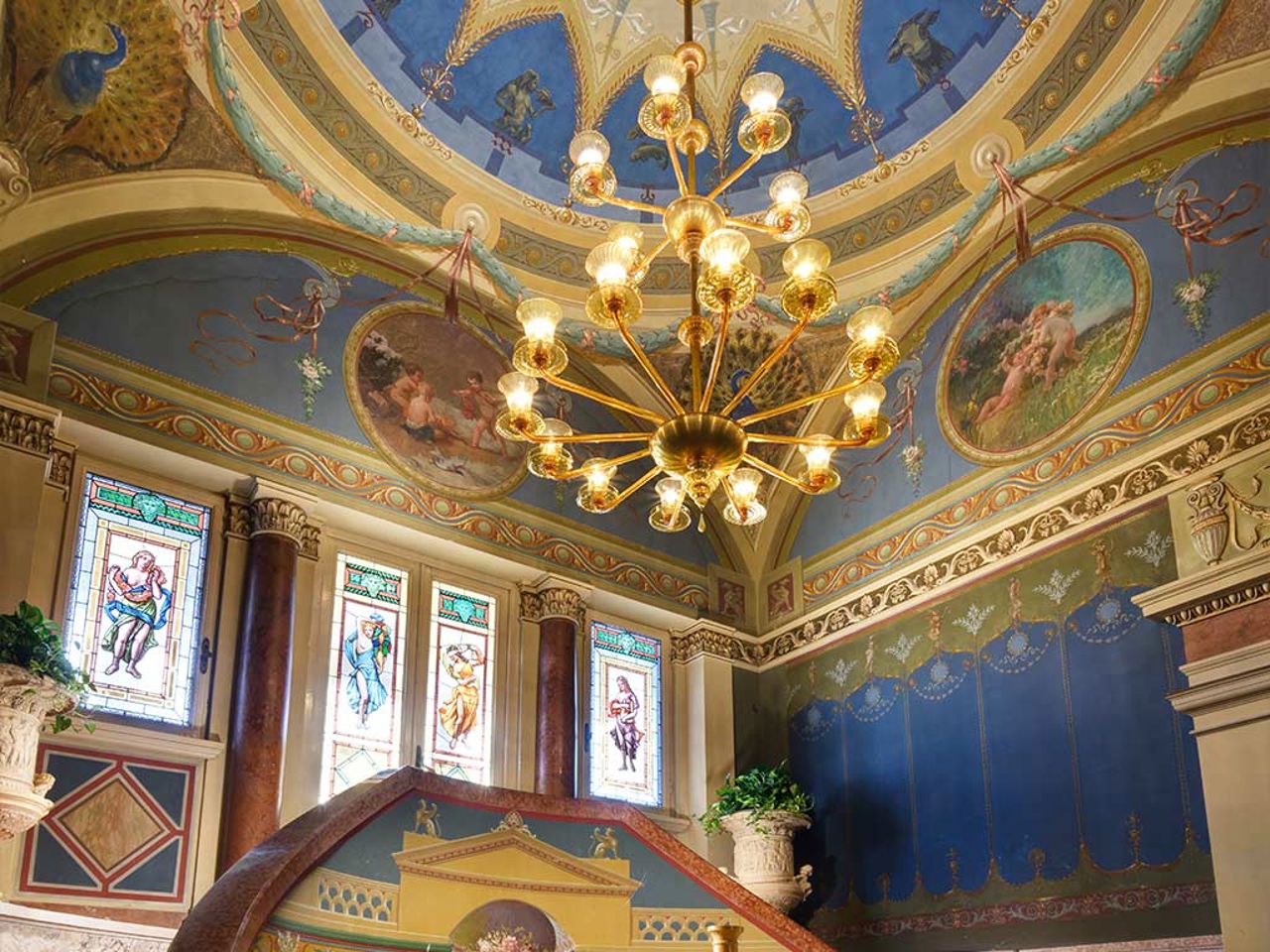Two thousand years ago the great Latin poet Valerius Catullus said that “Sirmione, was the jewel among peninsulas and islands...”. A place so dear to the poet that he used to spend many stays in the resort, where it is said that his family owned one of the most sumptuous villas in all of northern Italy. Today’s Villa Cortine Palace Hotel stands on the hill of the same name that rises a hundred or so metres from the tip of the Sirmione peninsula. The name comes from the Latin cortes, a place of defence which in Roman times housed a military garrison enjoying a strategic position on Lake Garda.
During the Middle Ages the ownership of the hill was in the hands of the municipality of Sirmione, which in those centuries administered an agglomeration inhabited mainly by fishermen. In the following centuries there were no significant events in the history of Sirmione until the Austrian occupation of Lombardy-Veneto between the 18th and mid-19th century.
This was a period when many visitors, especially of German origin, were attracted by the beauty of Sirmione. In 1890 the property of the entire hill (about 5 hectares) was bought for 500 lire by Count Kurt Von Koseritz, minister of the Germanic Duchy of Anhalt, who was fascinated by the vegetation and the mild and temperate climate of the beautiful Sirmione. A few years later, between 1898 and 1900, the Count had the Villa built, partly out of a desire to help his wife, who was ill with tuberculosis and would thus have benefited from the climate of the lake, often indicated as a valid therapeutic treatment.
As was customary at the end of the 19th century, the façade of the Villa respected a rigorous neoclassical style with large columns supporting the portico-façade. It was decorated with Veronese marble, which was transported by lake on large barges. Kurt Von Koseritz and his family used the place as a holiday destination until August 1914, when his wife died and a few months later his sister also died. Shortly after these tragic events, on May 23rd 1915 to be exact, Italy entered into conflict with Austria and the First World War began. The Count was forced to return to Germany as a result of his antagonism towards the German Empire.
The Villa was confiscated as an enemy possession by the Italian State and given in concession to the municipality of Sirmione as a lazaret. The now 70-year-old Kurt Von Koseritz settled in Gernrode in Harz, in the country house of his deceased sister, where he died only a few months later on 1 March 1916.
After the end of the war, the villa was given back to the National Federation of Frontier Soldiers. Thus began a new phase in the history of Villa Cortine. Between 1920 and 1925, the municipality of Sirmione tried to acquire the villa and its park. One of the motivations of the then mayor was to use the villa as the headquarters for the municipality of Sirmione. In addition, the municipality itself lacked a cistern for water, which Villa Cortine could provide since it had a hydraulic system driven by a windmill, which is still visible today in the features of the tower in front of the Cavalli fountain).
In this way it would have been possible to transport water to the houses in the village at a relatively low cost. The municipality’s interest in acquiring the complex was also motivated by the fact that it lacked a regular school building. The park and villa were only sold in 1926 after Giuseppe Donnagemma, a wealthy industrialist from Varedo and majority shareholder in the Viscosa industrial group, one of the most important chemical companies of the time, proposed the deal to the municipality.
Under the terms of the agreement, Donnagemma undertook to renovate and extend the villa and build adjacent school buildings; in addition to the villa, the municipality also handed over the park in the deal, with the exception of the area where the monastery once stood, which is now partly a public park with the visible remains of the old church and where the nursery school funded by the industrialist at the time stands.
Donnagemma had a sculptor from Vicenza build the large fountain that stands on the driveway, with the God Neptune reigning supreme, and the smaller but still splendid fountains, such as the Monte Baldo fountain, a copy of Gianbologna’s Appenini fountain, which protects Sirmione, and the seahorse fountain. During these years new trees were also planted; the park, thanks to the mild climate, saw a unique vegetation of palms, cypresses and cedars flourish.
A few years later in 1939, at an advanced age, Donnagemma was forced to sell the property to the Florentine Galletti di Sant’Ippolito family. When the Second World War broke out, the Villa was soon taken away from the Conti Galletti to be used as a military headquarters, first by the Germans and then by the Americans. The war ended and in 1952, the Conti Galletti sold the Villa and park to Franco Signori, a well-known hotel entrepreneur from Sirmione. Five years later, in 1957, the architects Cassi and Remella designed and built the large complex we see today, enlarging the Villa and creating what is now the luxurious 5-star hotel.
The years went by, the economic boom between the 60’s and 80’s brought tourists from all over the world to Sirmione and the Villa Cortine, according to the chronicles of the time, was one of the most popular places for celebrities to stay. In 1987 the villa changed ownership and passed into the hands of the Ghidini family, well-known industrialists from the city of Brescia, who decided to invest in the renovation and expansion of the hotel’s services, making Villa Cortine one of the most prestigious luxury hotels in Lake Garda.
Origins
NEOCLASSICAL SOUL AND REFINED ELEGANCE














